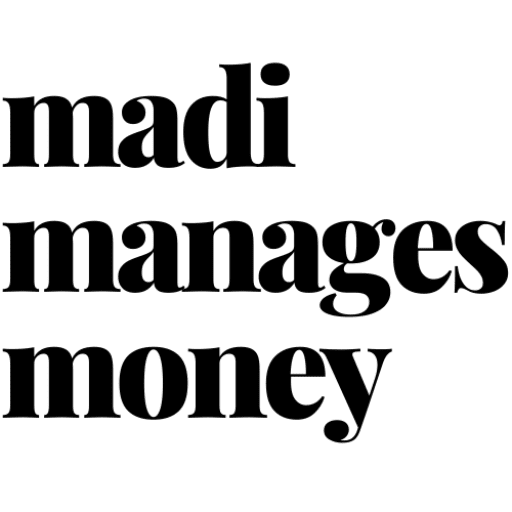Given my day job in retail financial advice and credentials, I’m the definition of someone who should have made all the right money moves. (Think: finance bro charading as a mom.) But yet, I didn’t.
This post walks through my salary and investing story, especially as it relates to tax-advantaged accounts. Tax-advantaged accounts are those like 401(k)s and IRAs that incentivize you to save for retirement with tax benefits.
I made plenty of avoidable mistakes along the way, because I was a n00b who didn’t know better. If I was clueless, and I work in the industry, it’s no wonder most people don’t know where to start. We aren’t taught this stuff in school.
The top two highlights from my rap sheet:
- Roth Regrets – I didn’t invest in a Roth early in my career, which feels like a personal tragedy some days. Instead, I plowed any excess cash flow into my 401(k) and side hustles. Because my salary was at its lowest during these years, I missed an opportunity to pay taxes at a lower rate.
- Premature Portfolio Manager – I should have spent more time researching what account types to contribute to instead of optimizing my portfolios. (Had to earn that 11% return on my $2,000 portfolio, ya know?)
Job 1: Private Equity Financial Accountant
Base Salary Range: $50,000 to $55,000
Duration of Employment: 3 years
Vesting: 3-year cliff (left fully vested)
Contributions: 20% of my salary = ~$10,000 to ~$11,000 per year
Good Decisions: I made solid, early contributions to my 401(k) and took full advantage of my employer match; invested aggressively in alignment with my long-term time horizon (won’t be using this money for another 30 years, at least)
My Mistakes: I didn’t take advantage of a Roth IRA or Roth 401(k) in my early 20s. 😩 Despite working in the financial industry, I didn’t even know what they were until a few years into my career
After my first job, I rolled my old 401(k) into my new employer’s plan. This was a minority decision! Most people roll old 401(k)s into more portable IRAs (that you can open at any online brokerage firm).
I decided to do this because responsibilities at my next job included determining the investment choices in that company’s 401(k) plan, so I could directly influence what investment options I had available to choose from.
Generally, I wouldn’t do what I did. Instead, I’d go the route of rolling over into an IRA.
IRAs are more portable and have more investment options to choose from. There’s also a decent chance that fees will be lower for you in an IRA, especially if the company that you work edfor (that you had your 401(k) with) is on the smaller side.
Job 2: Investment Analyst
Base Salary Range: $65,000 to $72,000
Duration of Employment: 3 years
Vesting: 6-year graded (left partially vested)
Contributions: Maxed 401(k); started contributing to Roth 401(k) and HSA
Good Decisions: I continued to invest as much money as I could in my 401(k), Roth 401(k), and HSA; invested aggressively in alignment with my long-term time horizon
My Mistakes: I had my order of account funding mixed up; should have been prioritizing contributions to my Roth instead of the regular 401(k); left this job before fully vesting
At the income levels of my second job, I should have been prioritizing my Roth over 401(k) contributions. Since I was making less money at the time, it would have been optimal to pay taxes on my earnings and then contribute after-tax dollars to my Roth. Compare that to now when I’m subject to a higher marginal tax rate and am being phased out of contributing to a Roth.
I left this job before fully vesting, leaving thousands of unvested dollars on the table in a pretty generous retirement plan. At face value, this sounds like a suboptimal decision. Looking back on it, even financially, it wasn’t.
I actually returned to a new, higher-paying job at my first employer. Returning to that company meant that I’d resume being fully vested after just six months. I’d returned to vested status faster, earned a higher wage, and got to do a job that interested me.
The vesting schedule at my second job was so long that it actually disincentivized me to stay. Knowing I still had years to vest made leaving an easy decision.
At this time, I rolled my 401(k) and Roth 401(k) into an IRA and Roth IRA, respectively.
Job 3: Product Management & Sales Strategy
Base Salary Range: $82,000 to $130,000
Duration of Employment: 4-5 years
Vesting: 3-year cliff (fully vested)
Contributions: Maxed out 401(k), Roth IRA, and HSA
Good Decisions: Maxed all tax-advantaged accounts (401(k), IRA, HSA); invested aggressively in alignment with my long-term time horizon
My Mistakes: When I resign, whether that be sooner or later, I’ll leave a painful amount of restricted stock on the table
During my most recent job, I did a lot of things right. I’d better, since I manage the financial planning department at my company.
Unless I retire from this company (not happening – only 32), leaving unvested restricted stock on the table is a suboptimal decision that I’ll inevitably make.
I’m at the point in my career where RSU compensation that requires vesting is a regular part of my annual pay. Each tranche of restricted stock that I receive takes three years to vest.
I hope you walk away from this post with enough knowledge to avoid some of these mistakes yourself. But, if you’re feeling sheepish about already committing one of my financial cardinal sins above, just think of Young Madi mucking things up out there circa 2013.
It’s going to be alright. 🙂
The opinions voiced in this material are for general information only and are not intended to provide specific advice or recommendations for any individual. To determine which investments may be appropriate for you, consult with your financial advisor.

